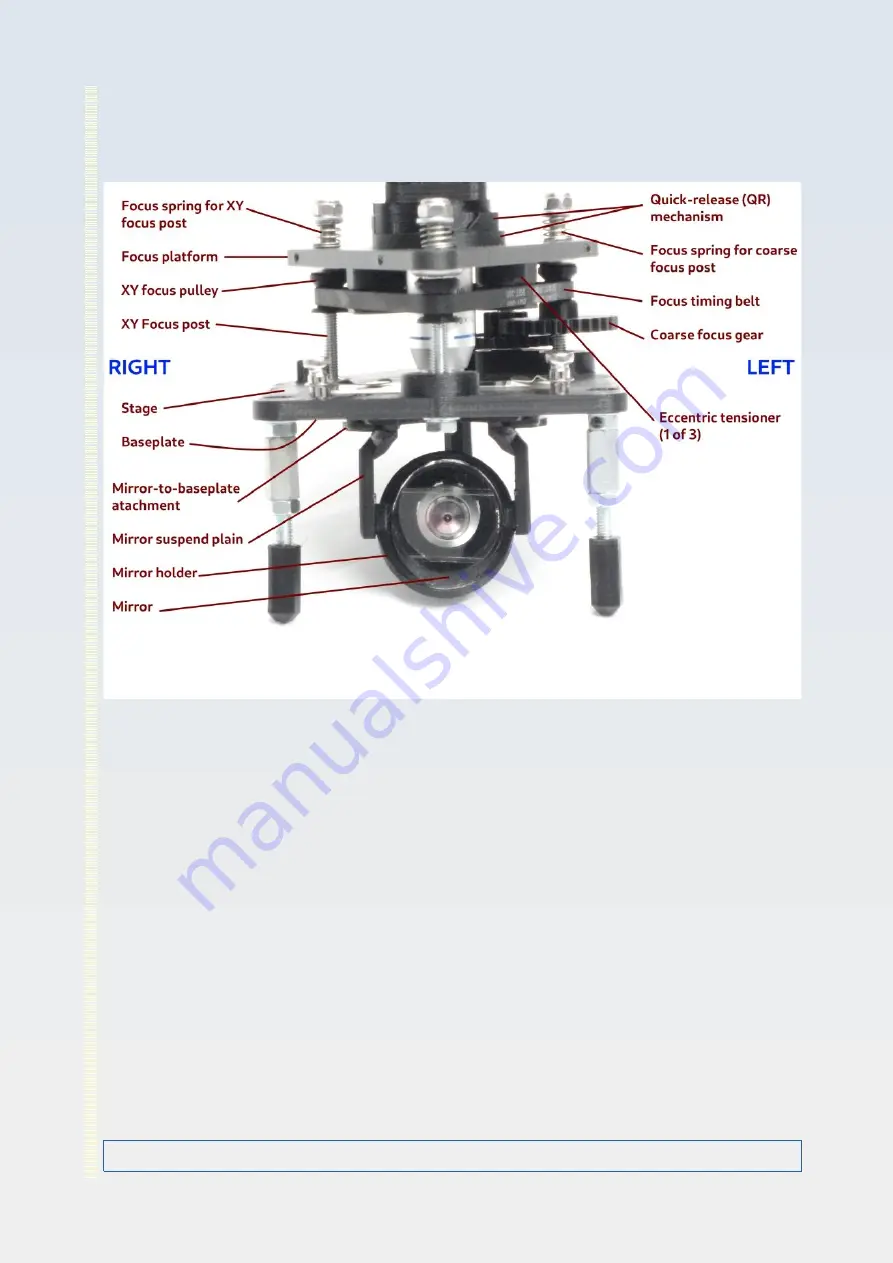
The terms LEFT and RIGHT refer to the user’s left and right when observing the
microscope from behind (which is where the primary user is most commonly expected
to be situated when making observations). This explains why those terms appear to be
reversed in the front-on view shown in the figure below.
The terms ‘stage’ and ‘baseplate’ are interchangeable. Baseplate is used more
commonly when referring to the undersurface of the stage. The term ‘Z-stage’ refers to
the whole focussing mechanism i.e. the stage/baseplate and the focus platform as
joined by the three focus post bolts with a timing belt and pulley mechanism (this
arrangement is known as the ‘tripost architecture’ of the Z-stage).
The ‘optical tube’ refers to all above-stage optics plus the objective and this fits onto
the focus platform via a tri-helical flexure thread called the ‘quick release mechanism’
or simply the ‘QR mechanism’. This is composed of a male part (attached to the bottom
of the filter block and which contains the thread for the objective) which mates with a
female part that is an integral component of the focus platform.
The mirror illumination system is composed of several parts as shown. The mirror itself
is the glass oval mirror. This is fixed to the oval plastic ‘mirror holder’ which, in turn,
articulates with the ‘mirror suspend plain’ component. The latter component is held
against the baseplate by the ‘mirror-to-baseplate attachment’ via two M4 thumbscrews
(illustrated in the section ‘Assembling the Microscope’ below).
There are other features present which are not described here because they are only
relevant to scopes that have upgrades fitted. These will be described in any manuals or
tutorials pertaining to the fitting and use of those upgrade modules.
PUMA Foundation Scope
Page 9 of 40
User’s Manual v1.0
































